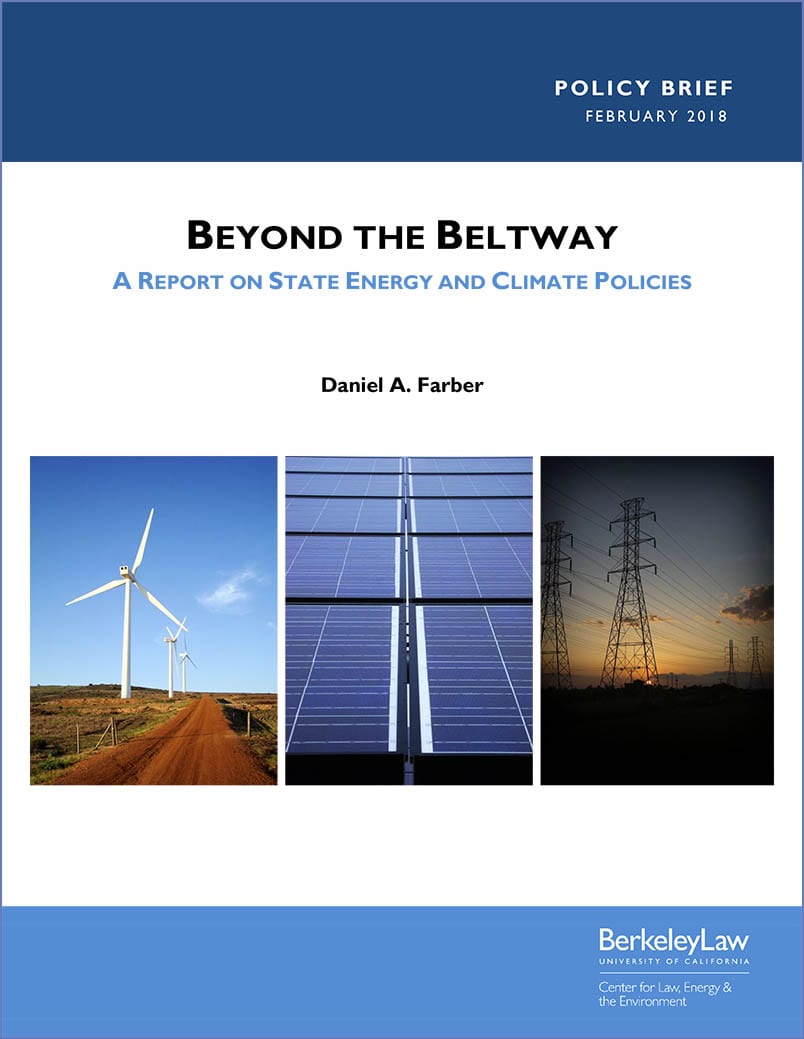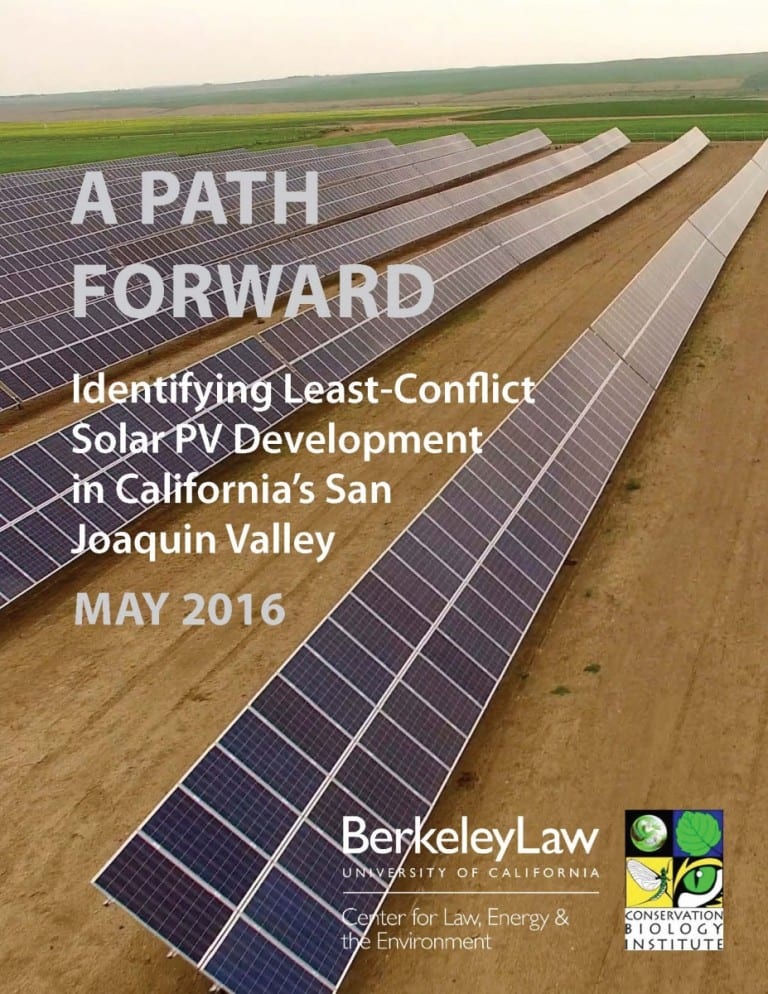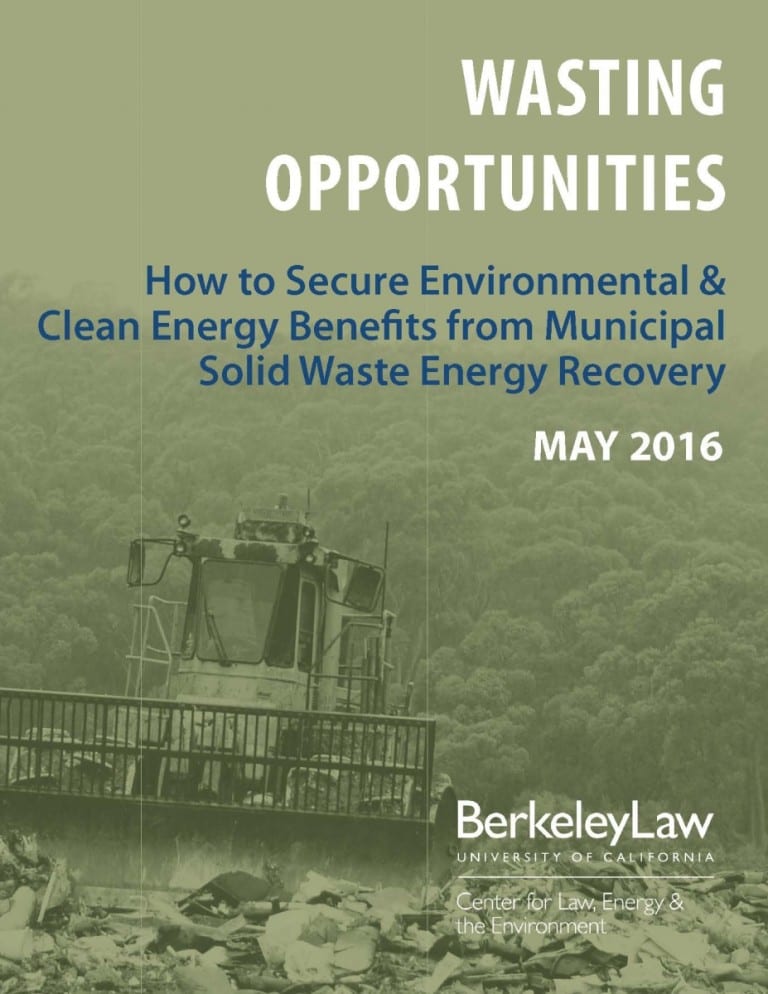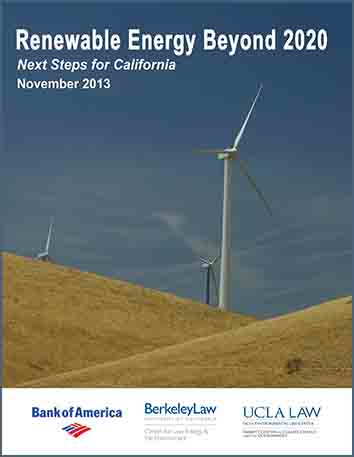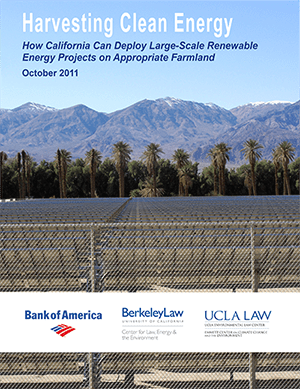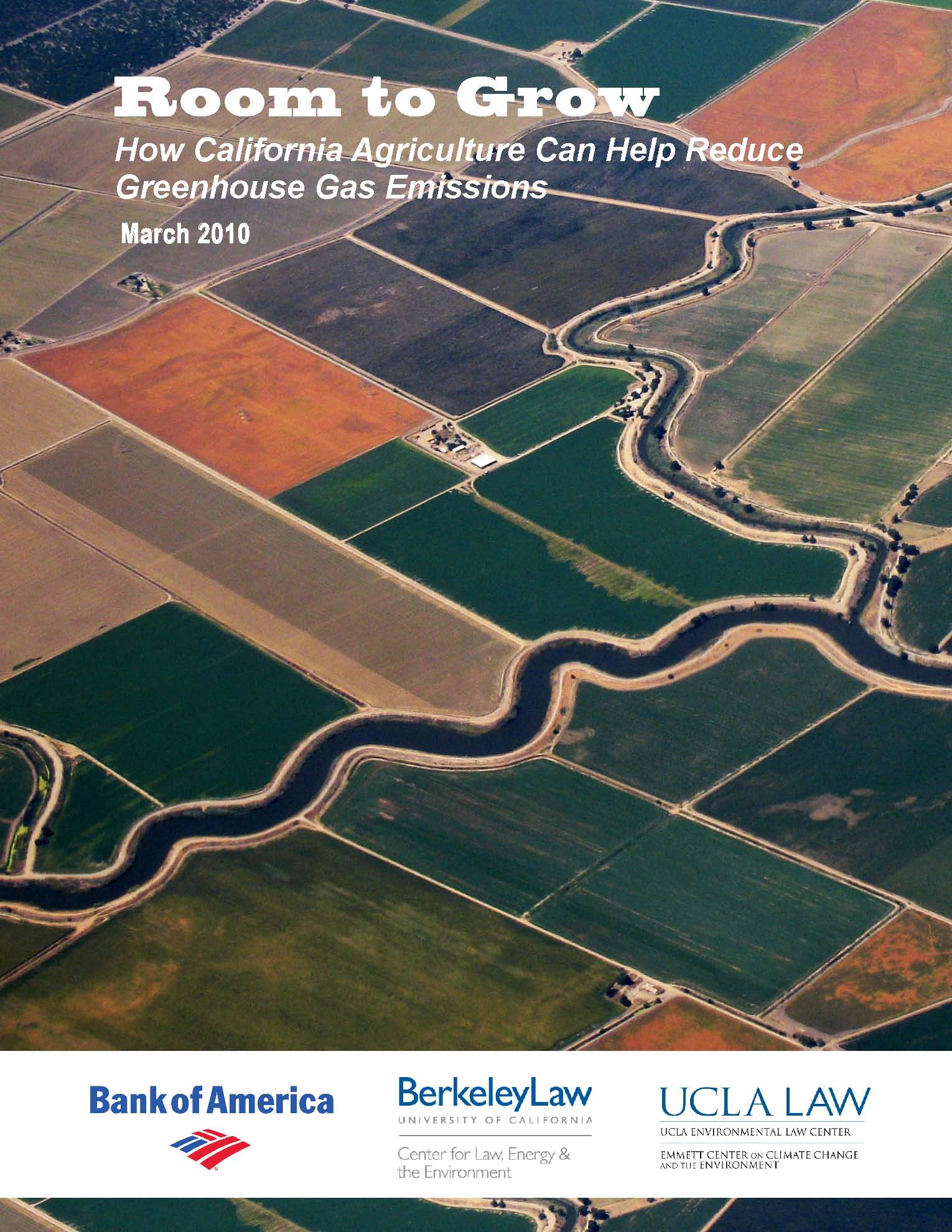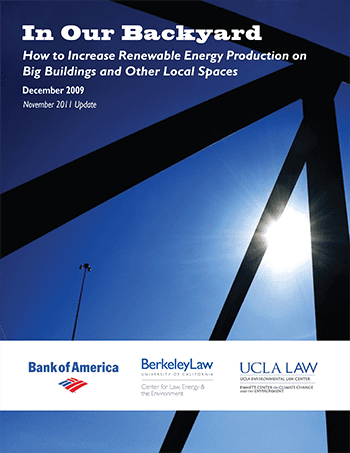Electricity generation is a major source of greenhouse gas emissions throughout the United States and globally. Our policy reports discuss solutions to achieve a broad and cost-effective deployment of renewable energy as a cornerstone strategy for meeting climate goals. The work spans from improved siting decisions for utility-scale renewable facilities to a political analysis of the state-by-state efforts to address renewables.
November 2018
A New Solar Landscape: Improving County Level Landscape Planning for Utility-Scale Solar PV Facilities
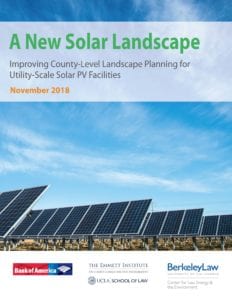 Senate Bill 100 (de Leon, 2018) requires California’s major utilities to obtain 60 percent of their electric power from renewable sources by 2030 and 100 percent from carbon-free sources by 2045. California has met and exceeded its renewable energy targets to date, with over one-third of the utilities’ electricity coming from renewable sources
Senate Bill 100 (de Leon, 2018) requires California’s major utilities to obtain 60 percent of their electric power from renewable sources by 2030 and 100 percent from carbon-free sources by 2045. California has met and exceeded its renewable energy targets to date, with over one-third of the utilities’ electricity coming from renewable sources
Our new report, A New Solar Landscape, offers a suite of policy solutions for incentivizing and improving landscape-level planning to meet California’s solar development goals.
July 2018
Renewable Electricity Integration: A Review of Policy Developments in Germany and Their Applicability to California
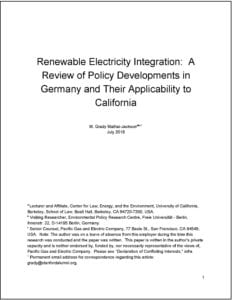 With the recent passage of SB 100, California must continue to grow its renewable energy resources in order to achieve carbon-free electricity by 2045. As California further integrates variable renewable electricity generation resources (VREs), assessment of Germany’s transition to VREs may provide valuable guidance.
With the recent passage of SB 100, California must continue to grow its renewable energy resources in order to achieve carbon-free electricity by 2045. As California further integrates variable renewable electricity generation resources (VREs), assessment of Germany’s transition to VREs may provide valuable guidance.
In 2017-18, Grady Mathai-Jackson took a sabbatical from his position as Senior Counsel with Pacific Gas & Electric in order to spend a year as an affiliate with CLEE, and a visiting researcher with the Environmental Policy Research Centre at Freie Universität in Berlin, and to study this transition. His resulting white paper describes the legal and policy frameworks governing the integration of VREs into the electrical systems and markets in both California and Germany. It provides quantitative and qualitative assessments of VRE integration in terms of promotion of VRE deployment, cost of integration, and curtailment of VREs.
February 2018
Beyond the Beltway: A Report on State Energy and Climate Policies
Federal policy receives the bulk of the nation’s attention to energy and climate matters, from President Obama’s Clean Power Plan to President Trump’s withdrawal from the Paris Agreement. But much of our nation’s energy and climate policy is made by governors, state legislatures and agencies across the country. Providing insight into the range of factors – political, geographical, economic and more – that determine the immensely varied state energy and climate policies across the nation, Beyond the Beltway is an analysis of the state and regional efforts driving the nation’s energy and climate outlook.
May 2016
Mapping Lands to Avoid Conflict for Solar PV in the San Joaquin Valley
California’s push to achieve 50 percent of our electricity from renewable sources by 2030 will entail a significant deployment of large-scale solar photovoltaic (PV) installations. But in places like the San Joaquin Valley, proposed installations have engendered conflicts with agricultural and conservation groups, who fear a resulting loss of valuable lands and the species and farming and ranching that depend on them. Berkeley Law’s Center for Law, Energy and the Environment (CLEE) partnered with Conservation Biology Institute (CBI) and Terrell Watt Associates to develop a new process to find “least-conflict” lands in the eight-county San Joaquin Valley region.
May 2016
Securing Environmental Benefits from Solid Waste Energy Recovery
Californians send 30 million tons of waste to landfills annually. While reduction, recycling and composting can do their part, not all types of materials can be practically and economically recycled in an environmentally beneficial manner. This leftover trash stream may therefore present an opportunity to recover energy, using new and possibly cleaner technologies. However, California lacks an agreed-upon set of standards for measuring and balancing the life-cycle costs and benefits of various waste management methods, including energy conversion. This report recommends solutions for the state to address this challenge.
December 2014
Integrating Solar PV and Distributed Renewable Energy Policies and Programs into California City and County General Plans
 Local governments are the primary permitting entities for renewable energy generation facilities in California. Despite the recent surge in the renewable energy market, California’s diverse communities are at different stages in establishing planning and permitting programs, and all communities can work to facilitate faster development of this vital sector. This guidance document, with model general plan policies, was created for the Governor’s Office of Planning and Research (OPR). The goal is to help local governments streamline their permitting processes for two types of distributed renewable energy projects.
Local governments are the primary permitting entities for renewable energy generation facilities in California. Despite the recent surge in the renewable energy market, California’s diverse communities are at different stages in establishing planning and permitting programs, and all communities can work to facilitate faster development of this vital sector. This guidance document, with model general plan policies, was created for the Governor’s Office of Planning and Research (OPR). The goal is to help local governments streamline their permitting processes for two types of distributed renewable energy projects.
August 2014
Addressing Climate Change without Legislation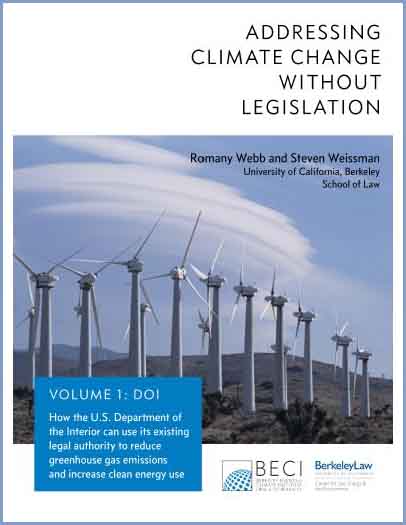
This three volume series of reports analyzes steps that federal agencies can take to mitigate climate change under existing laws. A collaboration between CLEE and the Berkeley Energy and Climate Institute, this series details how the Department of the Interior (DOI), Federal Energy Regulation Commission (FERC), and the U.S. Department of Agriculture (USDA) can use their legal authority to reduce greenhouse gas emissions and expand clean energy use across the country.
November 2013
Renewable Energy Beyond 2020: Next Steps for California
California is on pace to meet its goal of securing 33 percent of the state’s electricity from renewable sources like solar and wind by 2020, but energy experts report that the in-state market for renewable energy will lose momentum without new policies to encourage deployment beyond 2020.
Key policy recommendations: a new renewable energy target for 2030 that accounts for greenhouse gas emissions and tracks the state’s long-term climate change goal, comprehensive planning for renewable deployment to occur in the most efficient and cost-effective manner, incentives to encourage utilities and renewable developers to realize this vision.
June 2012
California’s Transition to Local Renewable Energy: 12,000 Megawatts by 2020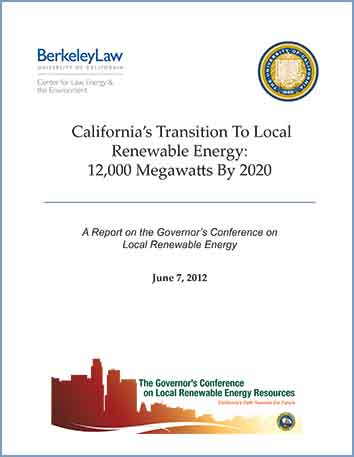
California has one of the most ambitious renewable energy programs in the country, with a target of procuring 33 percent of its electric energy from renewable sources by 2020. Governor Jerry Brown has raised the bar even higher, calling for California to reach and surpass the 33 percent target by developing 12,000 megawatts of local renewable energy. This report summarizes the concerns, observations and suggestions of Conference participants and other stakeholders for clearing a path toward the 12,000 megawatt goal.
February 2012
The Statewide Benefits of Net-Metering in California & the Consequences of Changes to the Program
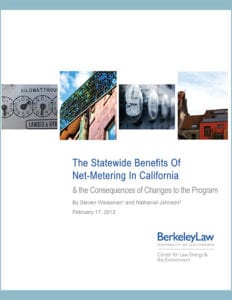 Net Metering is a policy that allows commercial and residential electricity customers to receive credits on their utility bills for on-site renewable energy generation in excess of their electric load that is exported to the state’s electric grid. Recently, California’s net metering program has been called into question by some electric utilities, most noticeably, the San Diego Gas & Electric Company (SDG&E). This paper addresses these important questions about the net metering program, as well as the implication that the costs associated with the program outweigh the benefits.
Net Metering is a policy that allows commercial and residential electricity customers to receive credits on their utility bills for on-site renewable energy generation in excess of their electric load that is exported to the state’s electric grid. Recently, California’s net metering program has been called into question by some electric utilities, most noticeably, the San Diego Gas & Electric Company (SDG&E). This paper addresses these important questions about the net metering program, as well as the implication that the costs associated with the program outweigh the benefits.
October 2011
Harvesting Clean Energy: How California Can Deploy Large-Scale Renewable Energy Projects on Appropriate Farmland
California will need to steer the development of large-scale renewable energy facilities on agricultural land toward lands that do not deplete the state’s prime agricultural and biological resources.
Key policy recommendations: develop criteria for the most suitable agricultural lands for renewable energy deployment, expedite environmental review and endangered species permitting for projects on these lands, and coordinate state and local land use planning and transmission investments to encourage development on these sites.
March 2010 *
Room to Grow: How California Agriculture Can Help Reduce Greenhouse Gas Emissions
Agricultural businesses can play a key role in reducing greenhouse gas emissions associated with farming in California, while saving themselves money in the process. In the short-term, agriculture leaders can adopt immediate cost-effective practices to reduce GHG emissions, while in the long-run policy makers must assist with industry efforts.
Key policy recommendations: Increased on-farm renewable energy through expansion of the feed-in tariff and net metering programs, more efficient fertilizer usage and livestock feed, and regulatory processes to encourage innovation.
December 2009
In Our Backyard: How to Increase Renewable Energy Production on Big Buildings and Other Local Spaces
To meet renewable energy goals, California will need to formulate strategies for greater deployment of renewable energy technologies on businesses and public properties. Unfortunately decentralized energy generation still faces both financial and regulatory barriers and is impeded by limited consumer outreach.
Key policy recommendations: Expanded feed-in tariff and net metering policies and state legislation to deploy more renewable energy technologies on state highways, the aqueduct, and other public spaces.
